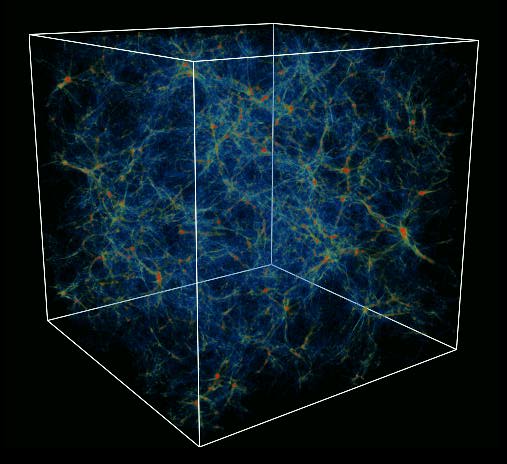nec208":3u3uokui said:
That can't be right .If you think of a doughnut the new parts are by the center and the old parts are by the outer layer.How can there be old and new parts in the center?
If space was big ball of mass (gas) that exploded the parts are moving away very fast.The older parts are more away than the center parts.
It works when we explode things .So you are saying space is different?
And how can space have shape be flat ,blob,globe or whatever if there was big explosion?
Nec said: It works when we explode things. So you are saying space is different?
You are correct, the big bang model is completely different in its mechanics than the black cats you blow up on the 4th of July!

I think you're thinking too 3-dimensional about the situation. Keep in mind that the greatest misconception about the big bang is that it was an explosion of matter that happened within pre-existing space. This is not the case. Instead, the big bang
was space! There was no space or matter before the big bang. Additionally, on intergalactic scales, it is not the galaxies themselves that are moving farther from each other, rather it is space itself that is expanding, thus moving galaxies apart.
Think of it like a loaf of bread with raisins. When the bread is a ball of dough, the raisins are closer together. Now throw it in the oven, wait a while until it's cooked, and take the loaf out. What do you observe about the raisins? Well, they've moved farther apart, but not under their own power; instead, it was the bread between the raisins that was moving them farther from each other.
As for the "center" of the universe, well, there is no center! The big bang, and cosmic expansion, mean that every point of space expands away from every other point of space. We can't look to a point in space and find the center, because the center of space essentially exists everywhere, if that makes sense. Here's an example:
Example 1: A---B---C---D
Here are 4 galaxies represented by 4 letters. Right now, each galaxy is 1 billion lightyears apart. Now lets expand them:
Example 2: A----------B----------C----------D
Each galaxy is now 5 billion lightyears away from its nearest neighbor. This is when increased distance means increased expansion rate. Lets look at Example 1 from Galaxy A's perspective. Galaxy B is 1 billion lightyears from Galaxy A, and Galaxy D is 3 billion lightyears from Galaxy A. Now lets compare Galaxy A's perspective in Example 2. Galaxy B has moved away to a distance of 5 billion lightyears, yet Galaxy D has moved away to a distance of 15 billion lightyears. From Galaxy A's perspective, B moved just 4 billion lightyears away in the same amount of time that D moved 12 billion lightyears away.
This basic idea is where the argument comes that distant galaxies appear to expand away from us at speeds that are close to that of light (C). If we flip the two examples and look at everything from Galaxy D's point of view, it will be exactly the same as Galaxy A's.
I hope this post helps put things into perspective! Did anyone ever tell you to look at things more 3-dimensionally? Well, in astronomy you have to do that, except it's probably better to look at things 4-dimensionally! Surrendering your basic ideas of dimension here on Earth will give you a more open mind to understand cosmic expansion.



